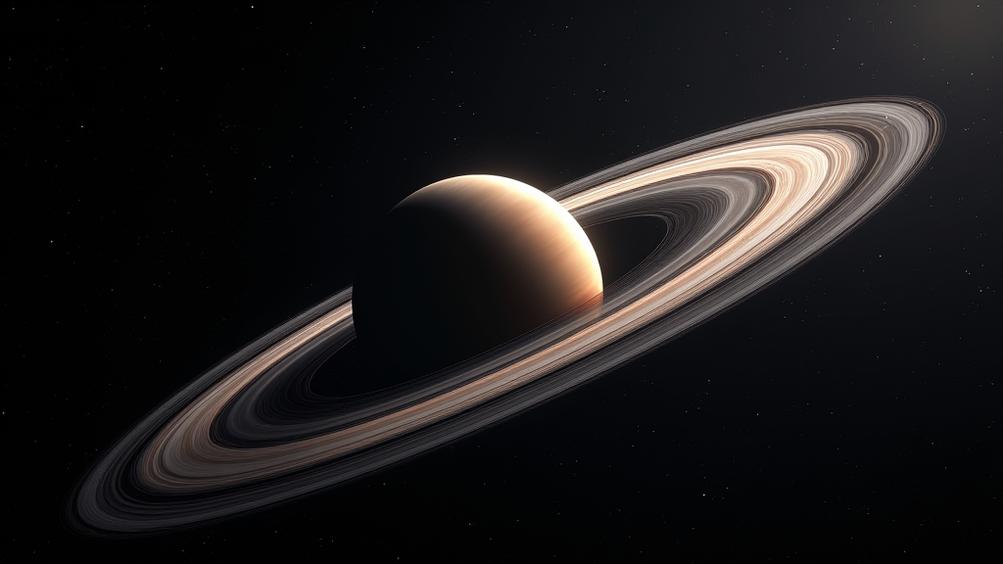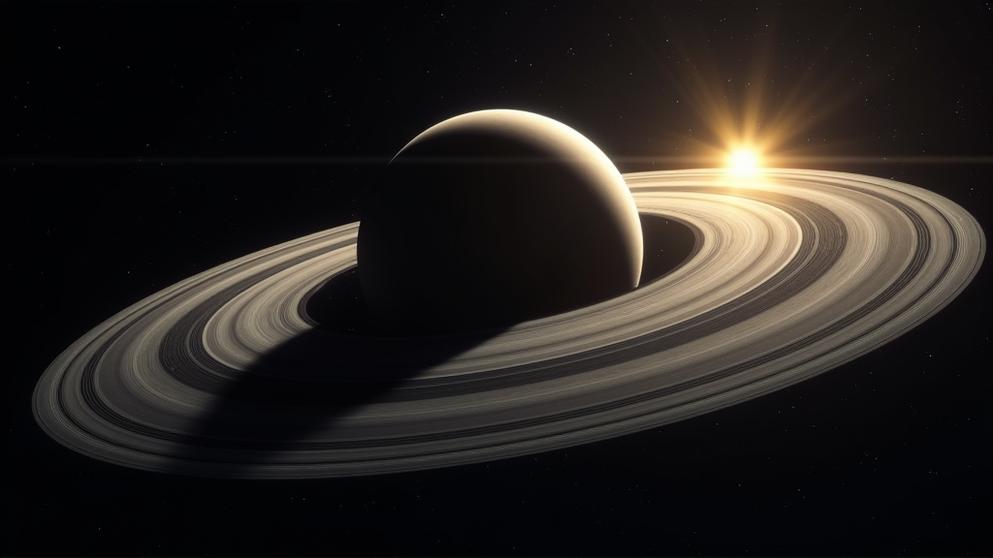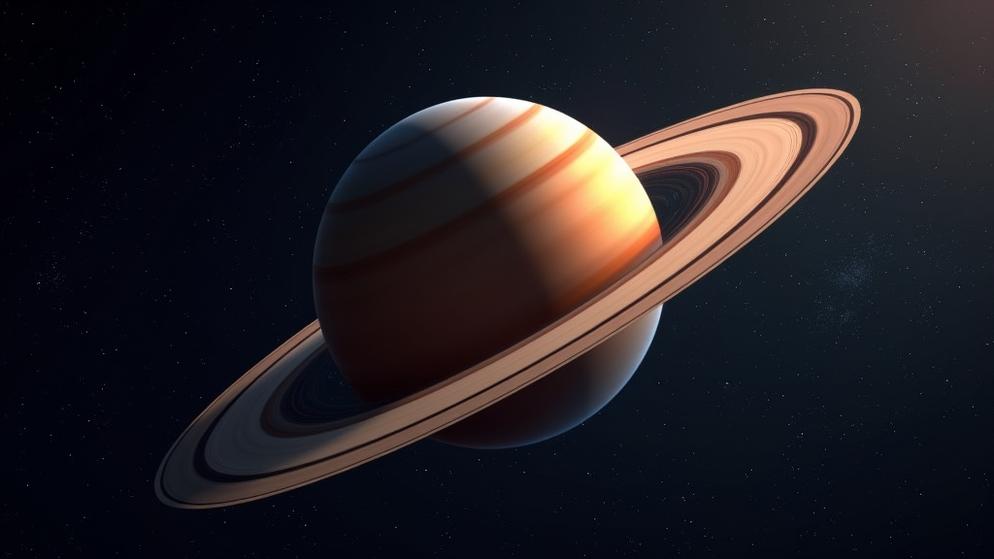Exolanet J1407b: Definition, Comparison, How Far, Discovery
J1407b is a massive exoplanet or brown dwarf located 430 light-years from Earth. J1407b orbits a young, sun-like star called J1407 in the constellation Scorpius. J1407b’s mass is estimated to be 10-40 times that of Jupiter. J1407b possesses an enormous ring system measuring approximately 90 million km in radius. The rings appear 200 times larger than Saturn’s rings.
J1407b dwarfs Saturn in size. J1407b’s mass is 13-26 times greater than Saturn’s. J1407b’s radius measures 180 times larger than Saturn’s, spanning 120,000 kilometers. J1407b’s ring system has an estimated diameter of around 35 million miles (56.3 million kilometers). J1407b’s rings are thicker and more massive than Saturn’s, possibly containing moon-sized objects.
J1407b is located 420 light-years from Earth. J1407b lies 200 times farther than Saturn from Earth. J1407b resides in the constellation Centaurus, visible from the Southern Hemisphere.
J1407b was discovered on May 29, 2012 by Eric Mamajek’s team from the University of Rochester. Astronomers used the SuperWASP survey at SuperWASP-North observatory in La Palma, Canary Islands, Spain. The transit method enabled the discovery. The exoplanet discovery was announced in October 2012.
What is J1407b?
J1407b is a massive exoplanet or brown dwarf located approximately 430 light-years from Earth. The object orbits a young, sun-like star called J1407 in the constellation Scorpius. J1407b’s mass is estimated to be 10-40 times that of Jupiter, potentially categorizing it as a brown dwarf rather than a planet.
J1407b possesses an enormous ring system measuring approximately 90 million km in radius. The rings appear 200 times larger than Saturn’s rings and would be vastly larger than the full moon if placed in our solar system. J1407b’s ring system consists of multiple ringlets, with estimates suggesting up to 30 individual rings. The rings exhibit unusual density and mass compared to Saturn’s rings.
J1407, the host star of J1407b, is a G-type main-sequence star with a mass of approximately 0.9 solar masses. The J1407 system has an estimated age of 16 million years. J1407b orbits this young star, creating a unique planetary system.
J1407b’s composition likely consists primarily of hydrogen and helium gases. The planet and its ring system are relatively young and dynamic, with evidence indicating the rings may be forming or dissipating. Gaps in J1407b’s rings suggest the potential presence of exomoons, which help sculpt and shape the ring structure.
How big are J1407b rings?
J1407b’s ring system spans roughly 180 million kilometers in diameter. Rings measure approximately 200 times larger than Saturn’s. Some rings reach widths of 150 million kilometers. J1407b’s rings extend about 240 million kilometers wide. Astronomers consider this ring system one of the largest known in our galaxy.

How many rings does J1407b have?
J1407b’s ring system consists of 30 rings, according to a new analysis led by Leiden’s Matthew Kenworthy. The rings measure tens of millions of kilometers in diameter. Rochester’s Eric Mamajek discovered the system in 2012. It was the first ring system found outside our solar system. J1407b initially had 37 rings identified.

How big is J1407b compared to Saturn?
J1407b, a young giant exoplanet, dwarfs Saturn in size. J1407b’s mass is 13-26 times greater than Saturn’s. J1407b’s radius measures 180 times larger than Saturn’s, spanning 120,000 kilometers. J1407b boasts an enormous ring system 200 times more extensive than Saturn’s rings. J1407b’s massive proportions make it a remarkable celestial body.

J1407b’s ring system is truly enormous compared to Saturn’s. J1407b has rings that are 200 times bigger than Saturn’s rings. Saturn’s rings stretch out for approximately 175,000 miles (282,000 kilometers) in diameter, while J1407b’s ring system has an estimated diameter of around 35 million miles (56.3 million kilometers). J1407b’s rings are not only larger but thicker and more massive than Saturn’s. J1407b’s ring system possibly contains moon-sized objects, making it one of the largest known in the universe.
How big is J1407b compared to Earth?
J1407b dwarfs Earth in size and mass. Scientists estimate J1407b’s mass at 10-40 Earth masses. J1407b’s disk spans 180 million km, 120 times Earth’s radius. J1407b’s ring system extends 2.2 au from its center, comparable to Earth’s entire orbit around the Sun.
How big is J1407b compared to Sun?
J1407b dwarfs our Sun in size. J1407b’s diameter is 116 times larger than the Sun’s diameter. Sun’s diameter measures 1.4 million kilometers. J1407b’s diameter spans approximately 161.4 million kilometers. J1407b is 60 times more massive than Jupiter. J1407b extends beyond Saturn’s orbit if placed at our solar system’s center.
How big is J1407b compared to Jupiter?
J1407b is a massive exoplanet 10-40 times more massive than Jupiter. Astronomers estimate J1407b’s mass at 10-40 Jupiter masses, making it one of the biggest planets discovered. J1407b spans a much larger size than Jupiter. Astronomers find J1407b’s exact mass difficult to constrain within a likely range.
How far is J1407b from Earth?
J1407b is located 420 light-years from Earth. Young exoplanet J1407b orbits its host star J1407. J1407b lies 200 times farther than Saturn from Earth. Saturn orbits the Sun at 1.4 billion kilometers. J1407b resides in the constellation Centaurus, visible from the Southern Hemisphere. Researchers discovered J1407b in 2015.
Can you see J1407b from Earth?
J1407b cannot be seen from Earth with amateur or professional telescopes. Earth-based observers lack technology to directly image this exoplanet. J1407b orbits the star J1407, located 420 light-years away. Astronomers study J1407b indirectly through its gravitational effects on J1407. Advanced telescopes detect these effects.
Viewing J1407b from Earth requires powerful telescopes and professional astronomical equipment. Astronomers use sophisticated instruments like SuperWASP-South to detect the planet’s presence. The exoplanet has an apparent magnitude of 12.3, rendering it extremely faint from Earth’s perspective.
Observing J1407b presents significant challenges due to its vast distance and the faintness of its host star system. Even with large telescopes, J1407b appears as a tiny, faint dot. Advanced space-based telescopes like Hubble have not directly imaged the exoplanet.
Astronomers primarily rely on indirect detection methods to study J1407b. The transit method allows researchers to observe the planet as it passes in front of its host star. J1407b causes rare 56-day mini-eclipses of its star, providing valuable data for analysis. Scientists study variations in the host star’s light to infer the planet’s properties.
When was J1407b discovered?
J1407b was discovered on May 29, 2012 by Eric Mamajek’s team from the University of Rochester. Astronomers used the SuperWASP survey at SuperWASP-North observatory in La Palma, Canary Islands, Spain. The transit method enabled the discovery. The exoplanet discovery was announced in October 2012, marking a milestone in exoplanetary research.
Does J1407b have moons?
J1407b’s complex ring system contains a large gap, strongly suggesting the presence of moons. Researchers observed a brightness decrease during transit, indicating a potential moon. Exomoons around J1407b remain unconfirmed but highly likely. J1407b’s moons would be larger than solar system moons due to the planet’s mass of 10-40 times Earth’s. Ongoing research continues to investigate J1407b’s potential satellites.
J1407b is a gas giant exoplanet with a mass 10-40 times that of Jupiter. The planet orbits its host star J1407 at a distance of 3.9 astronomical units. J1407b’s orbit is highly eccentric, ranging between 3 to 13 astronomical units from its host star. The planet completes one orbit around its star every 372 days.
J1407b’s ring system is composed of ice and rock particles. The mass of the ring system is similar to that of Jupiter. Astronomers detect irregular and unpredictable eclipses of J1407’s host star, potentially caused by the ring system or moons. A 2019 study searched for J1407b moons using transit timing variations but found no conclusive evidence.
J1407b is the only known planet in its system. The system’s architecture could allow for smaller, undetected moons or planets. J1407b’s ring system suggests a rich history of planetary formation and evolution. Future observations will reveal more about the potential moons and planets within the J1407b system.

